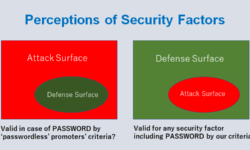Dr. Anirban Bandyopadhyay, the author of the book, Nanobrain and currently a Senior Scientist of the Advanced Key Technologies Division (AKED) in the National Institute for Materials Science (NIMS) in Ibaraki, Japan participates in Risk Roundup to discuss the Universal Geometric Language.
Universal Geometric Language
Since geometries & their reciprocal mathematical ratios are evident in the human ecosystem, in the human body, and all life forms, they are now beginning to be used to understand the natural and human-made universe. For instance, while geometry is used for sketching to calculating distances, and the concepts are used for creating animations, video games, music, architecture, art, weather patterns, and more, there is more to geometry than just measuring and mapping. It is the language of the universe.
As a result, geometry and geometric algebra are becoming the subject of intense interest and evaluation. The emerging advances in our understanding of geometry and its integration with the language of primes is being conceived as the language of the universe that will likely help us to create a new theory of everything.
Since we sit at the dawn of a new era, on the brink of an epic shift toward a universal geometric language, a geometric musical language that will put us on a path to many possible futures, the choices we make now, what we bring to the natural and human-made world at this moment will become the creative force that materializes our new collective security for humanity.
Is There A Need To Move Beyond Current Information Concepts?
From thousands of human tribal languages to numerous machine languages and machine learning languages, languages have evolved in all different forms. While different human-spoken languages have worked over the years, as we begin to explore the universe beyond the human ecosystem, perhaps there is a need for a universal language that is understood by both humans, machines, and the environment. As a result, there is a need to look beyond our current information concepts that have been the basis of the digital age.
While many ancient texts describe a state of humanity in which initially only one language was spoken, and which was referred to a means of communication said to be understood by all living things, as we move towards creating another intelligent species, it is crucial to evaluate what information concepts are essential to building further. Perhaps at the core is the need to assess if there is a way to create a universal language that can be understood by everyone, both man and machine, and all living beings and the environment. So, the question is whether geometry can be the language of universality? And if yes, what will the universal geometric language be based on?
Understanding “Information” And “Information Theory”
According to the book, Nanobrain, “the universe is not just participatory; both the observer and the environment are part of information content. Thus, the information is geometric”. That brings some critical questions:
- If the information is an infinite network of geometric shapes; do we have the necessary tools to understand how the network of geometric shapes operates?
- Do we know how to apply the understanding of the geometric shapes and build a universal language that can be understood by both humans and machines?
- In a language where information is an assembly of the geometric shapes, what will be the future of technology?
- How will it shape our coming tomorrow?
It seems “information” is universal in all processes, natural and artificial. Since mathematical models can define all processes and math is a universal language due to the universality of its principles and foundations, geometry is also common to everyone. Now, information processing in humans, all living beings, and machines are essential aspects of dynamic systems that are influenced by the interactive environment. So, as we build other intelligent species and begin to explore beyond the human ecosystem, it is fundamental to evaluate the basic features of information in nature in a language that is understood by everyone.
While over the years, we have focused on the “information” concerning human-to-human transactions, the concept has advanced with the rise of “machines.” It is not just the development of mathematical logic, but the development of technology and our desire to explore beyond the human ecosystem that is forcing us to evaluate the very fundamentals of “information” and the language of information in nature.
At the moment, information is purely an abstract concept. While the theory of information, as described in the paper “A Mathematical Theory of Communication,” published by Claude Shannon, is still the basis of the “information” concept, the fundamentals of computing have pushed the information theory much further.
From what is known today, all living beings are information processing systems. All information is connected. There is no discrete piece of information. Information can be interpreted in many different ways. It can be a message; it can be the meaning of a message, or the effect of a message. Information can also be the knowledge itself and a process in itself. Information in itself is also an entity. There is more information inside any information. Information can have a different meaning in different environments. Information also emerges from silence when no question is asked or answered. Information can take various forms at different times. The information chain does not get broken. Furthermore, according to the book, Nanobrain, the unit of information in nature is an event.
While the “time” in the universe is believed to be real, it is crucial to evaluate whether the events in the universe also be written linearly? While the current school of thought believes that events in the universe can be rewritten linearly, considering the alternative that the universe builds events within and above as geometric shapes, is there a need for a new form of information processing and processors?
Perhaps a new form of information processing is essential. The reason is, the foundation of the current “information theory,” according to the book, Nanobrain is based on the basic principle that every single event happening in nature could be explained as a sequence of the most straightforward event, switching between “yes” and “no.” Except for a line, this principle rejects all other geometries that could connect the events. Is this a sustainable approach on which we can build beyond the human ecosystem?
A New Approach Based On The Language Of Primes
In the new approach proposed in the book Nanobrain, all possible connecting geometries are allowed for every single event. Moreover, each corner of a geometric shape is considered as an independent event. Furthermore, an event, in reality, could get redefined by a mere change in geometry since a single thread of events connects the corners of multiple imaginary worlds.
So, the question that needs to be evaluated is, whether it is better to see a triangle or read 100001010101010000000? Since we need a decoder to read the numbers, do these sets of letters make sense to build the systems beyond the human ecosystem? Or would it make sense to have a language that has an inbuilt decoder?
It seems “The Language of Primes,” as proposed by the book, Nanobrain, helps us understand the way the universe defines and unfolds events. The proposed idea to change the way the universe defines and reveals events as changing geometric shapes sheds light on different contradictions of scientific research. According to Anirban, the philosophical perspective completes when mathematically the metric of the prime model is extrapolated to engineer more powerful conscious machines than humans. Similar to the English language that has 26 letters, in the proposed Universal Geometric Language, fifteen primes are the 15 letters of Geometric Musical Language (GML). That brings us to essential questions:
- What does the prime based geometric universe look like?
- Is it possible to develop a mathematical tool to analyze the human world within and above?
The Language Of Primes
While the machine code (or object code), machine language, a collection of binary digits, or bits that the computer reads and interprets has been the only language a computer was capable of understanding, it seems we may be on the cusp of a fundamental transformation. Advances are emerging that bring the much-needed potential for the universality of man-machine language.
The language of primes is conceived as the language of the universe. The integration of geometry and primes will perhaps help to create a new theory of everything. Based on the book, Nanobrain, “Earlier, for a century, facts were important; now we build a geometry of confusion, split confusion, and the journey ends in facts. The marriage of geometry and primes helps to create a new theory of everything”.
It seems the universe has so many different forms of information signals from living and non-living; at this point, we have no idea how they are connected to each other. So, if we imagine that all living and non-living signals are connected to each other, then it is perhaps possible to build an information protocol to map intricately connected signals of both living and non-living, of man and machines of varying wide ranges of time scales in a singular architecture of the time.
Supposedly, every single interaction follows a language. If one takes only the first 15 primes, 99.99% of all integers could be created. So, the question is, why not use primes like letters of a language? Since primes are original to this universe and do not repeat, in an infinite series, events grow within and above without any repetition of symmetries. A pattern of input events could change its architecture following the metric forever and continue to build and predict the future of humanity beyond cyberspace, aquaspace, geospace, and space. It is time to begin a discussion on the language of primes as the language of the universe!
For more, please watch the Risk Roundup Webcast or hear the Risk Roundup Podcast
About the Guest
Dr. Anirban Bandyopadhyay is the author of the book, Nanobrain. He is currently a Senior Scientist of the Advanced Key Technologies Division (AKED) in the National Institute for Materials Science (NIMS) in Ibaraki, Japan. He received his Ph.D. in 2005, joined as an ICYS research fellow, permanent faculty of NIMS, visiting scientist at Massachusetts Institute of Technology, MIT, 2013–2014. He has been recognized with multiple awards, built the International institute of invincible rhythms (IIIR), in 2016 (www.iioir.org) in Shimla, India.
About the Host of Risk Roundup
Jayshree Pandya (née Bhatt), Ph.D., is a leading expert at the intersection of science, technology, and security and is the Founder and Chief Executive Officer of Risk Group LLC. She has been involved in a wide range of research, spanning security of and from science and technology domains. Her work is currently focused on understanding how converging technologies and their interconnectivity across cyberspace, aquaspace, geospace, and space (CAGS), as well as individuals and entities across nations: their governments, industries, organizations, and academia (NGIOA), create survival, security, and sustainability risks. This research is pursued to provide strategic security solutions for the future of humanity. From the National Science Foundation to organizations from across the United States, Europe, and Asia, Dr. Pandya is an invited speaker on emerging technologies, technology transformation, digital disruption, and strategic security risks. Her work has contributed to more than 100 publications in the areas of science and commerce. She is the author of the books, Geopolitics of Cybersecurity and The Global Age.
About Risk Roundup
Through the Risk Roundup initiative, Risk Group is on a mission to talk with a billion people: innovators, scientists, entrepreneurs, futurists, technologists, policymakers, to decision-makers. The reason behind this effort through the Risk Roundup initiative is to research, review, rate, and report strategic security risks facing humanity. This collective intelligence effort is essential to understand where we need to focus on our collective security. And what destructive forces we need to be mindful about.
Risk Roundup is released in both audio (Podcast) and video (Webcast) format. It is available for subscription at (Risk Group Website, iTunes, Google Play, Stitcher Radio, Android, and Risk Group Professional Social Media).
About Risk Group
Risk Group is a Strategic Security Risk Research Platform and Community. Risk Group’s Strategic Security Community and Ecosystem is the first and only cross-disciplinary and collective community that is made of top scientists, security professionals, thought leaders, entrepreneurs, philanthropists, policymakers, and academic institutions from across nations collaborating to research, review, rate, and report strategic security risks to protect the future of humanity.
Copyright Risk Group LLC. All Rights Reserved





 The Coming Conflict With China
The Coming Conflict With China